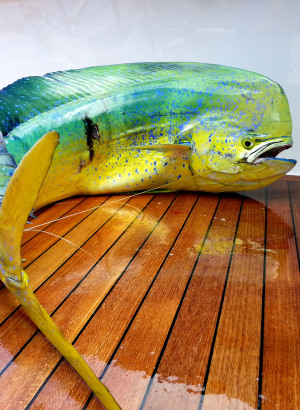Discover the intricate world of mahi mahi fishing and its crucial link to sargassum seaweed. From the vibrant waters of Florida to the vast Pacific, explore how changing ecosystems are reshaping this beloved sport. Learn about conservation efforts, regional disparities, and adaptive strategies ensuring the future of this magnificent fish and the anglers who pursue them.

Mahi Mahi Fishing and the Sargassum Seaweed Connection
The Fascinating World of Mahi Mahi Fishing
- Explore the intricate relationship between mahi mahi and sargassum weed
- Discover how environmental changes impact mahi mahi populations and fishing
- Learn about regional differences in mahi mahi catches across the Atlantic and Pacific
- Understand the importance of conservation efforts for sustainable fishing
- Get expert insights on adapting fishing strategies in changing ecosystems
There's nothing quite like the moment when a big mahi mahi erupts from the water, its colors flashing in the sunlight. It's what keeps anglers coming back year after year.
Luis Salazar, Costa RicaThe popularity of mahi mahi fishing has grown significantly in recent decades, contributing to local economies in coastal areas and inspiring a passionate community of anglers. However, this popularity has also raised concerns about the sustainability of mahi mahi populations, particularly in light of changing environmental conditions and fishing practices.
Understanding Mahi Mahi Behavior: The Key to Successful Fishing
Feeding Patterns and Preferences
Mahi mahi are primarily visual predators, relying on their keen eyesight to locate and pursue prey. They are most active during daylight hours, making them an ideal target for daytime fishing expeditions. Their diet consists mainly of:
- Small fish (e.g., flying fish, sardines, and anchovies)
- Squid and octopus
- Crustaceans
These fish are known for their aggressive feeding behavior, often competing with each other for food. This competitive nature can be advantageous for anglers, as it sometimes leads to multiple fish being caught in quick succession once a school is located.
Mahi Mahi Migration and Habitat Preferences
Mahi mahi are highly migratory fish, known for traveling long distances in search of food and suitable breeding grounds. Their movements are influenced by several factors:
- Water temperature: Mahi mahi prefer warm waters, typically between 70°F and 85°F (21°C to 29°C). Satellite-tagged mahi-mahi spend about 40% of their time near the surface and 95% of their day in water 77 to 84°F.
- Ocean currents: These fish often follow major current systems, which concentrate food sources and provide transportation.
- Presence of structure: Floating objects, including sargassum weed, attract mahi mahi as they provide shelter for smaller prey species.
Understanding these preferences is crucial for anglers looking to target mahi mahi effectively. By focusing on areas where these conditions converge, fishermen can significantly increase their chances of encountering these prized fish.
Mahi mahi are the perfect combination of beauty and ferocity. Their feeding frenzies are a sight to behold, and understanding their behavior is half the battle in landing these incredible fish.
Seth Horne, In The Spread founderThe Role of Seabirds: Nature's Fish Finders
The Symbiotic Relationship
The connection between seabirds and mahi mahi goes beyond mere coincidence. It's a prime example of a symbiotic relationship in marine ecosystems:
- Mahi mahi drive smaller prey fish to the surface while feeding.
- Seabirds spot this activity and begin circling and diving.
- The birds' activity attracts more mahi mahi to the area, creating a feeding frenzy.
- Anglers observe the bird activity and locate the fish, completing the circle.
This relationship highlights the importance of maintaining healthy marine ecosystems, where each species plays a crucial role in the balance of nature.
Interpreting Seabird Behavior
For anglers, the ability to read seabird behavior can be the difference between a successful day on the water and coming home empty-handed. Here are some key behaviors to watch for:
- Circling patterns: Birds flying in tight circles often indicate the presence of fish below.
- Diving activity: Sudden, frequent dives are a clear sign that fish are pushing bait to the surface.
- Flock size: Larger groups of birds typically suggest a more substantial concentration of fish.
- Bird species: Different birds may indicate various types of fish activity. Frigate birds, in particular, are often associated with mahi mahi.
Here are some additional tips for using seabird behavior to locate mahi mahi:
- Look for circling birds: Groups of seabirds circling an area often indicate the presence of a school of fish below.
- Watch for diving birds: Sudden dives or increased activity can signal that fish are pushing bait to the surface.
- Pay attention to bird species: Different birds may indicate various types of fish activity, with frigate birds being particularly associated with mahi mahi.
- Use binoculars: Scan the horizon for bird activity, even when far from visible structure or weed lines.
- Be patient: Sometimes bird activity may not immediately lead to fish. Stay in the area and be prepared for action.
When I see those frigate birds start to circle and dive, my heart starts pounding. It's nature's way of pointing us right to the fish.
Mike Hennessy, Colio Sportfishing Costa Rica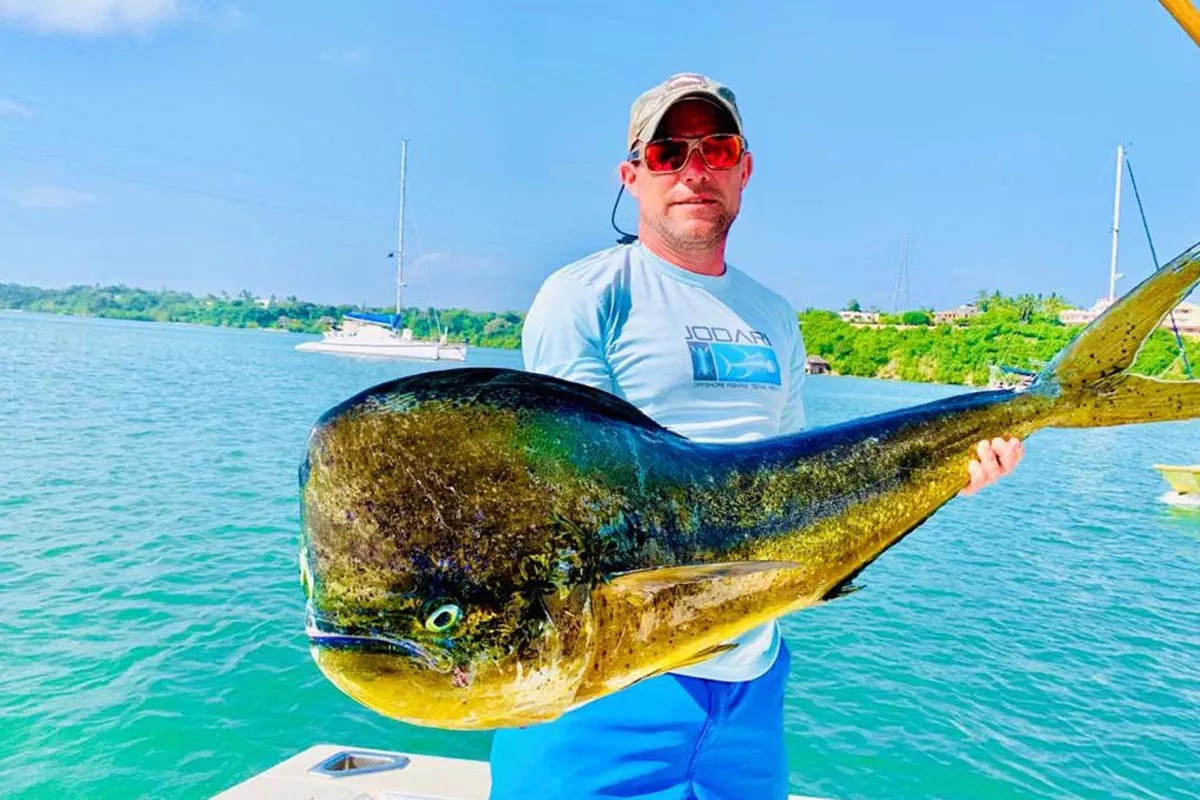
The Importance of Sargassum Weed: A Floating Ecosystem
Sargassum weed plays a pivotal role in the life cycle and habitat of mahi mahi, making it a critical factor in successful fishing expeditions. This floating algae forms vast mats in the open ocean, creating a unique ecosystem that serves as a nursery, feeding ground, and shelter for a wide variety of marine life, including young mahi mahi.
What is Sargassum Weed?
Sargassum is a genus of brown macroalgae (seaweed) that floats freely in the ocean, forming large mats or islands. Two species, Sargassum natans and Sargassum fluitans, are commonly found in the Atlantic Ocean and Gulf of Mexico. These plants have small, gas-filled bladders that allow them to float on the surface, creating a distinctive golden-brown color when seen from above.
- Buoyancy: Air-filled bladders keep the weed afloat, allowing it to form extensive floating mats.
- Rapid growth: Under ideal conditions, sargassum can double its biomass in as little as 11 days.
- Nutrient cycling: Sargassum plays a crucial role in nutrient cycling in the open ocean, supporting a diverse ecosystem.
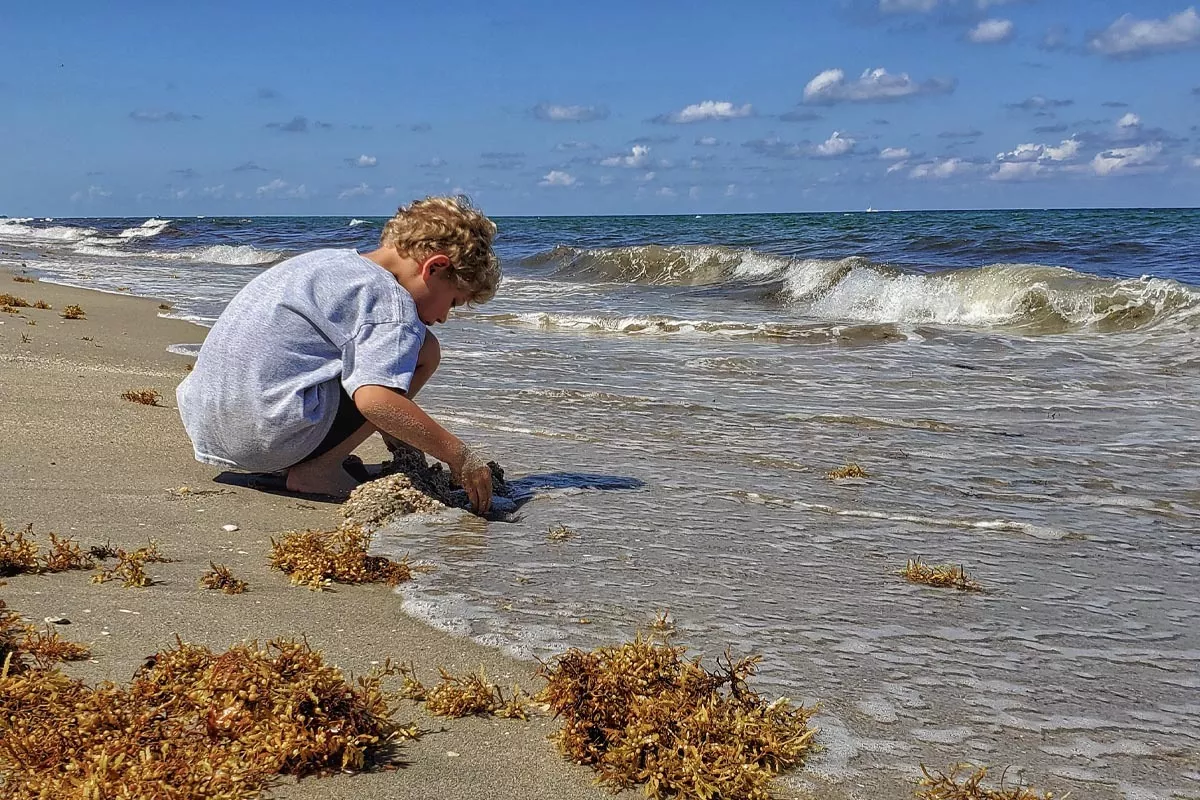
The Sargassum-Mahi Mahi Connection
The relationship between sargassum and mahi mahi is multifaceted and crucial for the fish's life cycle:
- Habitat for prey species: Sargassum provides shelter for small fish, crustaceans, and other marine organisms that are prey for mahi mahi. The complex structure of the weed offers protection from larger predators, allowing these smaller species to thrive.
- Nursery grounds: Young mahi mahi use sargassum mats as protection from predators during their early life stages. The floating weed provides cover and camouflage for juvenile fish, significantly increasing their chances of survival.
- Feeding hotspots: Adult mahi mahi patrol the edges of sargassum mats, feeding on the abundant life within and around them. The concentration of prey species around sargassum creates ideal hunting grounds for these predatory fish.
- Migration indicators: The presence of sargassum can influence mahi mahi migration patterns, as the fish follow these floating ecosystems. The weed lines serve as navigational cues for mahi mahi, guiding them to productive feeding areas.
- Temperature regulation: Sargassum mats can create slight temperature differences in the surrounding water, which may attract mahi mahi seeking optimal conditions.

Fishing Strategies Around Sargassum
For anglers, understanding the relationship between sargassum and mahi mahi is crucial for successful fishing:
- Look for weed lines: Visible lines or mats of sargassum on the water's surface are prime areas to target mahi mahi.
- Edge fishing: Concentrate efforts on the edges of sargassum mats, where mahi mahi often hunt for prey.
- Use appropriate lures: Lures that mimic the small fish and crustaceans found in sargassum can be highly effective.
- Be patient: Sometimes, mahi mahi may not be immediately visible around sargassum. Trolling along the weed line can eventually attract fish.
Finding a good sargassum line is like striking gold for mahi mahi fishing. It's where the action happens, and understanding this connection can make or break your fishing trip.
Seth Horne, In The spreadGlobal Impact: The Sargassum Seaweed Belt
The formation of the sargassum belt is a natural phenomenon that has far-reaching consequences for marine ecosystems worldwide. This massive floating mat of seaweed, stretching from the west coast of Africa to the Gulf of Mexico, plays a crucial role in the health and distribution of mahi mahi populations.
Understanding the Sargassum Belt
The sargassum belt, often referred to as the Great Atlantic Sargassum Belt, is a vast expanse of floating sargassum seaweed that forms in the Atlantic Ocean. Key aspects of this phenomenon include:
- Size and extent: The belt can stretch for thousands of miles, sometimes spanning the entire width of the Atlantic.
- Seasonality: While present year-round, the belt typically reaches its peak size during summer months.
- Dynamic nature: The size and location of the belt can vary significantly from year to year, influenced by ocean currents, temperatures, and nutrient availability.
Ecological Significance
The sargassum belt is more than just a massive accumulation of seaweed; it's a critical component of the Atlantic ecosystem:
- Biodiversity hotspot: The belt supports a diverse array of marine life, from microscopic organisms to larger fish species like mahi mahi.
- Carbon sequestration: Sargassum plays a role in capturing and storing carbon dioxide, potentially mitigating some effects of climate change.
- Nutrient transport: As the belt moves, it transports nutrients across vast distances, influencing marine ecosystems far from its origin.
Climate Change and the Sargassum Belt
Recent years have seen significant changes in the extent and behavior of the sargassum belt, largely attributed to climate change:
- Increased growth: Warmer ocean temperatures and higher nutrient levels have led to explosive growth of sargassum in some areas. This proliferation can be attributed to:
- Rising sea surface temperatures, which create favorable conditions for sargassum growth.
- Increased nutrient runoff from land, particularly in regions like the Amazon basin, which fuels algae blooms.
- Changes in ocean currents that concentrate nutrients in certain areas.
- Altered currents: Changing ocean currents are affecting the distribution of sargassum, impacting traditional mahi mahi habitats. This shift can lead to:
- Mahi mahi populations moving to new areas in search of suitable habitat.
- Changes in the timing and routes of mahi mahi migrations.
- Potential mismatches between mahi mahi and their prey species.
- Ecosystem disruption: Excessive sargassum can lead to beach inundation and oxygen depletion in coastal waters, affecting entire marine ecosystems. The impacts include:
- Smothering of near-shore habitats like seagrass beds and coral reefs.
- Creation of low-oxygen zones in coastal areas as excessive sargassum decomposes.
- Negative effects on tourism in some coastal regions due to beach accumulation.
These changes have a direct impact on mahi mahi populations and, consequently, on fishing success rates in various regions.
Global Fisheries Impact
The changes in the sargassum belt have far-reaching consequences for mahi mahi fisheries around the world:
- Shifting fishing grounds: As sargassum distribution changes, productive fishing areas may shift, requiring anglers and commercial operations to adapt.
- Varying catch rates: Some regions may see increased mahi mahi populations due to expanded sargassum habitats, while others may experience declines.
- Economic implications: Changes in mahi mahi distribution can affect local economies that rely on recreational and commercial fishing.
The sargassum belt is like a living, breathing entity that connects ecosystems across the Atlantic. As it changes, so too does the distribution and behavior of species like mahi mahi.
Seth HorneUnderstanding these global impacts is crucial for developing effective management strategies and adapting fishing practices to ensure the long-term sustainability of mahi mahi populations.
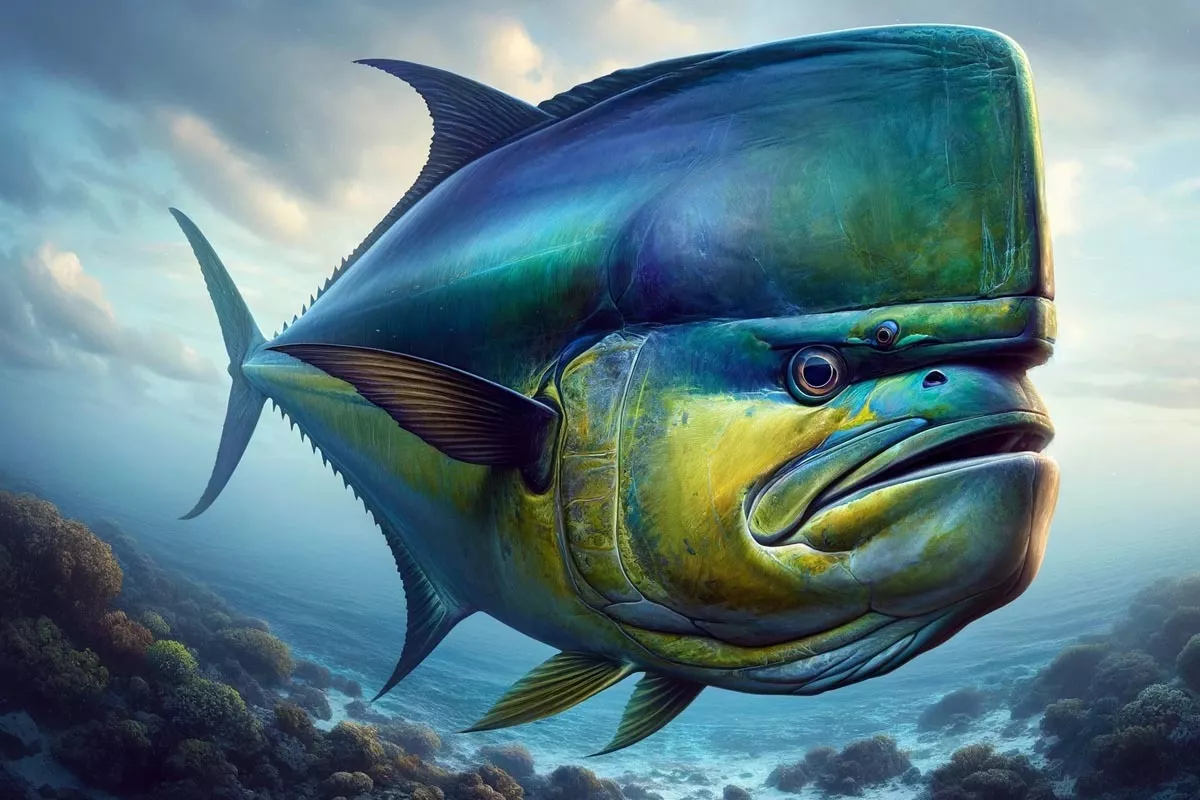
Regional Disparities: Mahi Mahi Fishing Around the World
The story of mahi mahi fishing is one of contrasts, with significant differences observed between various regions around the world. Understanding these disparities is crucial for both recreational anglers and those involved in fishery management.
Atlantic Region: A Tale of Decline
In the Atlantic, particularly in South Florida and Puerto Rico, mahi mahi catches have seen a troubling decline in recent years:
- Recreational landings in Florida plummeted from about 3 million pounds in 2015 to approximately 1 million pounds by 2020.
- Charter captains report catching smaller fish and experiencing reduced encounters with large schools.
- The decline is attributed to a combination of factors, including overfishing, environmental changes, and shifts in sargassum distribution.
Specific challenges in the Atlantic region include:
- Overfishing pressures: Despite regulations, commercial longline fishing in adjacent waters is blamed for depleting stocks.
- Environmental changes: Warming waters and altered current patterns have affected traditional mahi mahi habitats.
- Sargassum fluctuations: Changes in sargassum distribution have disrupted established feeding and migration patterns.
Five years ago, you were almost guaranteed a good day of mahi fishing. Now, it's become much more hit-or-miss.
Scott Goodman, Coastal Angler MagazinePacific Region: A Different Story
Contrast this with the Pacific region, where the picture is somewhat brighter:
- In 2022, recreational fishermen in the U.S. Pacific Islands harvested approximately 1.6 million pounds of mahi mahi.
- Hawaii remains a prime location for both commercial and recreational mahi mahi fishing.
- The region benefits from different ecological conditions and potentially more sustainable fishing practices.
- Vast oceanic habitats: The Pacific's expansive waters provide ample space for mahi mahi populations to thrive and migrate.
- Diverse fishing grounds: The Pacific offers a variety of productive fishing areas, from coastal waters to offshore seamounts and FADs (Fish Aggregating Devices).
- Potentially more sustainable management: Some Pacific regions have implemented strict quotas and monitoring systems to maintain healthy mahi mahi stocks.
The Pacific still offers incredible mahi mahi fishing opportunities. We're seeing good numbers and sizes of fish, but we're also mindful of the need for continued conservation efforts.
Capt. Shawn RotellaFactors Contributing to Regional Differences
Several factors contribute to these regional disparities:
- Ocean currents: Differences in ocean currents affect the distribution of sargassum and, consequently, mahi mahi populations. The Gulf Stream in the Atlantic and the North Equatorial Current in the Pacific play crucial roles in shaping local ecosystems.
- Fishing pressure: Varying levels of commercial and recreational fishing impact local populations differently. The Atlantic has historically faced more intense fishing pressure, particularly in areas close to populous coastal regions.
- Environmental conditions: Factors such as water temperature and prey availability differ between regions. The Pacific generally offers more stable environmental conditions for mahi mahi.
- Regulatory frameworks: Different management strategies and fishing regulations across regions influence catch rates and population health. Some Pacific nations have implemented more comprehensive management plans.
- Climate change impacts: While both regions are affected by climate change, the impacts have been more pronounced in certain Atlantic areas, leading to more significant disruptions in mahi mahi habitats.
Case Study: Dominican Republic
Interestingly, while many Atlantic regions have seen declines, the Dominican Republic has experienced an increase in mahi mahi catches:
- Mahi mahi catches in the Dominican Republic have notably increased, rising from 199 metric tons in 2015 to 460 metric tons in 2019, representing a growth factor of 2.3
- This trend indicates that mahi mahi populations in the region remain healthy and are not subject to overfishing.
- The Dominican Republic's location and warm waters provide ideal conditions for mahi mahi to thrive year-round.
- Mahi mahi are opportunistic feeders and are attracted to a variety of baits and lures, making them responsive to recreational fishing techniques.
- The lack of strict harvest restrictions in the Dominican Republic allows anglers to target mahi mahi more effectively
Conservation Efforts and Future Outlook
The challenges facing mahi mahi populations, particularly in the Atlantic region, have sparked increased focus on conservation efforts. These initiatives are crucial for ensuring the long-term sustainability of mahi mahi fisheries and the health of marine ecosystems.
Current Conservation Strategies
- Bag limit adjustments: Many areas have reduced daily catch limits for recreational anglers to help protect mahi mahi populations. For example, in Florida, the bag limit was reduced from 10 fish per person to 5 fish per person in 2019.
- Commercial fishing regulations: There are calls for stricter limits on commercial fishing, especially in areas where stocks are declining. Some regions are considering implementing catch quotas or restricting certain fishing methods.
- Habitat protection: Efforts to understand and protect sargassum ecosystems are gaining traction. This includes research into the impacts of climate change on sargassum distribution and initiatives to manage excessive sargassum blooms in coastal areas.
- Research initiatives: Ongoing studies aim to better understand mahi mahi migration patterns and the impacts of environmental changes. Tagging programs and genetic studies are providing valuable insights into population dynamics.
- International cooperation: Given the highly migratory nature of mahi mahi, there's a growing recognition of the need for international cooperation in management efforts. Organizations like the International Commission for the Conservation of Atlantic Tunas (ICCAT) are including mahi mahi in their conservation discussions.
Adapting Fishing Practices
As the marine environment continues to change, anglers and the fishing industry must adapt:
- Timing adjustments: Fishermen are learning to adjust their schedules to align with changing migration patterns. This may involve shifting peak fishing seasons or exploring new areas during traditional off-seasons.
- Technology adoption: Advanced fish-finding technology and satellite imagery are becoming more important in locating productive fishing grounds. Tools that can identify sargassum concentrations and temperature breaks are particularly valuable.
- Sustainable techniques: There's a growing emphasis on catch-and-release practices and using more selective fishing methods. Circle hooks, which reduce the likelihood of deep-hooking fish, are becoming more popular among conservation-minded anglers.
- Education and awareness: Many fishing charters and organizations are focusing on educating anglers about sustainable practices and the importance of conservation.
Innovative Approaches
Some novel approaches to mahi mahi conservation and sustainable fishing are emerging:
- Artificial habitats: In areas where natural sargassum is declining, there are experiments with creating artificial floating habitats to provide shelter for juvenile mahi mahi.
- Predictive modeling: Scientists are developing models that can predict mahi mahi movements based on oceanographic conditions, potentially allowing for more targeted and efficient fishing practices.
- Citizen science: Programs involving recreational anglers in data collection are providing valuable information on mahi mahi populations and helping to engage the public in conservation efforts.
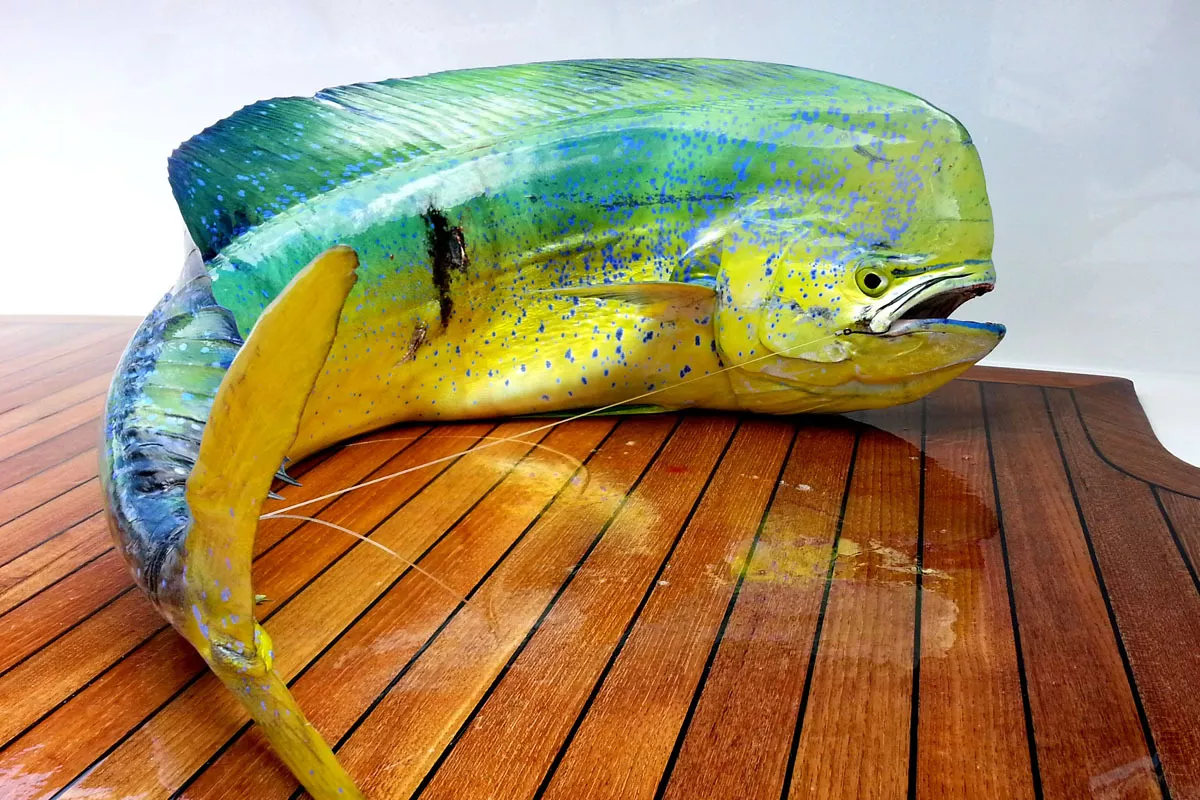
The Future of Mahi Mahi Fishing
User Reviews



